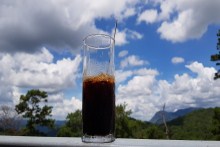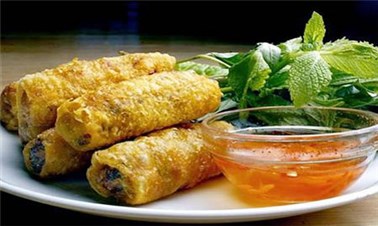It is not surprising that Vietnam produces wine. After all, it was once a French colony. When people refer to the ‘’reds’’ in Vietnam, it doesn’t really apply to communism anymore. The Government has begun to take a far more relaxed view of things in recent years and is positively encouraging tourism. That increases the demand for wine of course, but wine is part of Vietnam’s culture which is one of the things that attracts people to take a holiday to Vietnam.

Good restaurants in Vietnam are now likely to have imported wine on offer and when you travel in Vietnam, you may want to sample a good bottle of Bordeaux with your dinner. Certainly, such wine will also be available in bars and shops in cities like Hanoi and Ho Chi Minh City. However, tourists should look at the local wines as well!
Everyone associates wine with the grape but in Vietnam, rice has been used to produce alcoholic drinks for centuries. Simple rice alcohol has always been important in Vietnamese life. It is one of the offerings typically made during ancestor worship that is part of every major festival. It is offered at weddings and anniversaries as well as when a new house is being planned and land considered. Vietnamese New Year, Tet, would not be the same without rice wine. The Vietnamese drink alcohol on joyous but also sad occasions usually in buffalo-eyed cups; what many tourists would call mugs.
The process of making wine from rice
The rice is steamed, fermented for two or three days then distilled. When it comes to flavouring, there are several alternatives including herbs and snakes, pickled incidentally, but the latter is used as a medicine, not at the dinner table.
Can Wine
In the Highlands, which is regularly part of a Vietnam travel package, ethnic groups make can wine, drunk through a bamboo straw from a jar. The tribes ferment things like cassava or sweet potato with herbs in a jar over a few days. It is very bitter and certainly strong so be careful.
The jar is placed centrally in the village or communal house and the host and guests sit around it. There are several ‘’straws’’ placed in the jar and everyone in turn will drink. Water is slowly added and the jar never empties. All the while traditional music is played on a gong and usually there is some dancing.
Snake Wine
Snake Village near Hanoi is one of the places to go to see and sample this; every Vietnam tour package will include Hanoi so visitors will have the opportunity. Snakes are put into rice wine, the bottles are sealed and left for five years. The wine is purely medicinal and thought to be the remedy for a number of ailments. The ‘’western’’ equivalent would be a tonic wine.
Vang Da Lat
This is actually made from grapes found in Phan Rang. The French has introduced wine making in the later years of their time in Vietnam and recently with the Vietnamese themselves becoming a little wealthier and travelling to overseas countries the demand for wine has justified local production. Currently the main producer makes 1.5 million litres annually, including a red at 16% alcohol and some sparkling white. If you do to Da Lat, eat at Maison Long Hoa and try it.

































